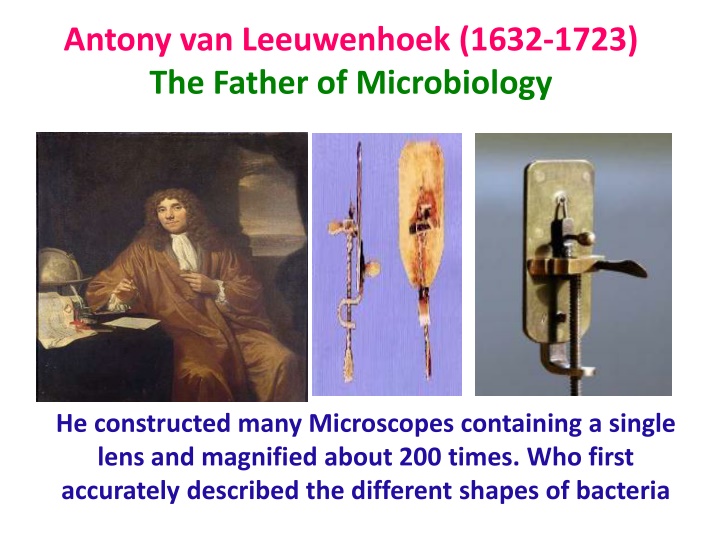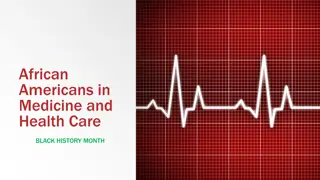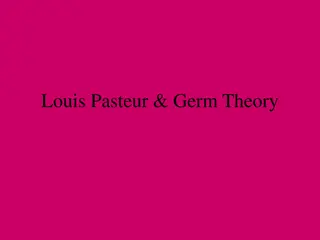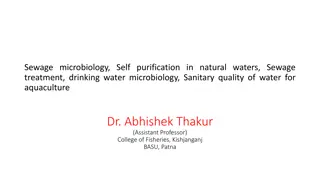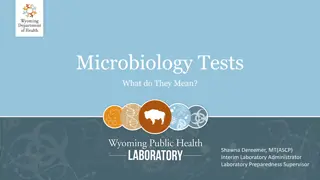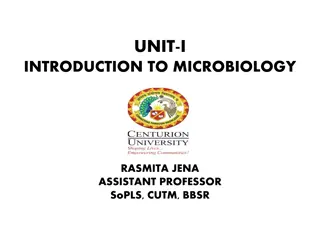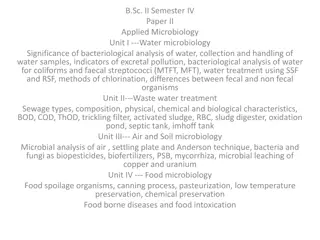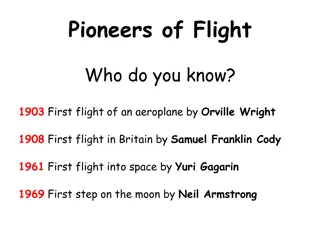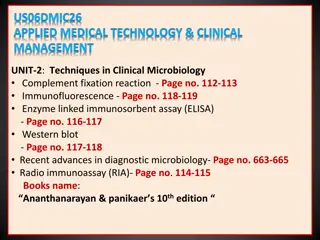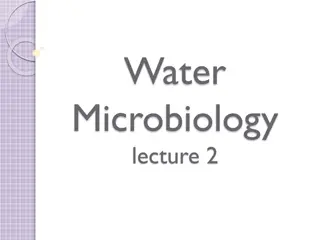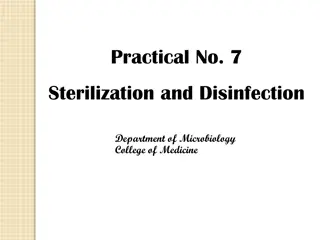Pioneers of Microbiology: Leeuwenhoek, Redi, Pasteur
Antony van Leeuwenhoek, the Father of Microbiology, pioneered the use of microscopes to describe bacteria shapes. Francesco Redi and Louis Pasteur conducted experiments to oppose the theory of spontaneous generation. While Redi disproved maggots' spontaneous generation, Pasteur's work led to breakthroughs in understanding microbial growth, fermentation, and the development of vaccines.
Uploaded on Oct 07, 2024 | 0 Views
Download Presentation

Please find below an Image/Link to download the presentation.
The content on the website is provided AS IS for your information and personal use only. It may not be sold, licensed, or shared on other websites without obtaining consent from the author.If you encounter any issues during the download, it is possible that the publisher has removed the file from their server.
You are allowed to download the files provided on this website for personal or commercial use, subject to the condition that they are used lawfully. All files are the property of their respective owners.
The content on the website is provided AS IS for your information and personal use only. It may not be sold, licensed, or shared on other websites without obtaining consent from the author.
E N D
Presentation Transcript
Antony van Leeuwenhoek (1632-1723) The Father of Microbiology He constructed many Microscopes containing a single lens and magnified about 200 times. Who first accurately described the different shapes of bacteria
Hans and Zacharias Jansen Ernst Ruska
The Controversy Over Spontaneous Generation The Controversy Over Spontaneous Generation John Needham & Lazzaro Spallanzani Insufficient heating which failed to kill heat resistant forms of bacteria(Endospores)
Francesco Francesco Redi Redi / Opposed SG / Opposed SG Redi's Problem Where do maggots come from? Do they form by Spontaneous Generation Hypothesis: Maggots come from flies. Redi put meat into three separate jars. Jar 1 was left open Jar 2 was covered with netting Jar 3 was sealed from the outside
Francesco Francesco Redi Redi / Opposed SG / Opposed SG Jar-1 Jar-2 Jar-3 Sealed No maggots developed Left open Maggots developed Covered with netting Maggots appeared on the netting Flies were observed laying eggs on the meat in the open jar Flies were observed laying eggs on the netting
Louis Pasteur / Opposed SG Louis Pasteur / Opposed SG Pasteur's Problem Where do the microbes come from to cause broth to decay. Hypothesis: Microbes come from cells of organisms on dust particles in the air; not the air itself. Pasteur put broth into several special S-shaped flasks Each flask was boiled and placed at various locations
Louis Pasteur (1822-1895) He is rightly called as founder of Microbiology. In 1860-61, he disproved strong evidence to disapprove the theory of spontaneous generation. In 1860-64, he gave experimental evidence that fermentation and putrefaction are effects of microbial growth In 1863-65 he developed the process known as pasteurization In 1865, Pasteur successes in demonstrating that silk worm disease was caused by protozoa. In1880, he proved the chicken cholera and developed vaccine. He also developed Anthrax vaccine vaccine(1885). Pasteur died in Paris on September 28,1895.His body lies in Pasteur Institute of Paris (1881)and rabies
The Germ Theory of Disease The Germ Theory of Disease John Tyndall Discovered Discovered that that some in in two two forms forms: : 1 1. . heat heat- -stable stable form form ( (endospore 2 2. . heat heat- -sensitive sensitive form form (vegetative some bacteria bacteria existed existed endospore) ) (vegetative cell) cell) Need Need prolonged prolonged or to to destroy destroy the or intermittent intermittent heating heat- -stable stable endospores endospores heating the heat His His research research resulted sterilizing sterilizing liquid liquid by point point on on successive successive days, Tyndallization Tyndallization. . resulted in by heating heating it it to days, referred in a a method method of to boiling referred to of boiling to as as Tyndallization Tyndallization is of of growth growth media other other situations situations where available available for for pressure is useful useful for media in in science where autoclaves pressure sterilization sterilization. . for sterilization sterilization science classes classes and autoclaves not and not
Robert Koch Robert Koch (1843 (1843- -1910) 1910) Although the microscope was invented in the 1600 s, it took 200 years for scientists to discover its use in isolating and identifying specific microbes for a particular disease. 1 in 7 People Died from TB
ROBERT KOCH Credited with demonstrating the first direct link between a single microbe and a single disease Tuberculosis. 1 in 7 People Died from TB
Germ Theory of Disease Germ Theory of Disease Robert koch Experimented with medium to grow bacteria on. He tried gelatin, but it did not work. Wife of colleague recommended agar (a gelatin-like product derived from seaweed). He could also add various nutrients necessary to grow certain organisms. Koch (pronounced Coke) originated use of a two part dish for growing bacteria named after Julius Petri, a German bacteriologist), and a technique for isolating pure bacterial colonies.
Germ Theory of Disease Koch s Postulates
Kochs Postulates The organisms should be present in diseased individuals but not in healthy individuals The organisms must be cultured away from the plant or animal body Such a culture, when inoculated into susceptible animals, should initiate the characteristic disease symptoms The organisms should be re-isolated from these experimental animals and cultured again in the laboratory, after which it should still be the same as the original organism.
Paul Ehrlich(1854-1915) Worked in Koch s Lab doing Staining Differential Speculated Chemical Selectively Specific Cells and Kill Them. at a Might Target Developed Discipline Chemotherapy and he was father chemotherapy. the of of
WINOGRADSKY AND BEIJERINCK Winogradsky founder of soil microbiology Beijerinck developed concept of the enrichment culture And rightly called as the founder of virology
Ferdinand Cohn Photograph:Ferdinand Cohn Credited with Discovering Endospores German Botanist
Joseph Lister Developed Antiseptic Surgery Sterilized with Heat Swabbed with Carbonic Acid Reduced Post Surgical Infections Lister with his staff at King's College Hospital
EDWARD JENNER (1749-1823) FATHER OF VACCINATION Smallpox
Alexander Fleming (1881-1955) Early penicillin culture facility Early penicillin culture facility at the Sir William Dunn School at the Sir William Dunn School of Pathology, Oxford, England. of Pathology, Oxford, England. Discovered penicillin Discovered penicillin Noted that Mold Might Noted that Mold Might Kill Bacteria Kill Bacteria
